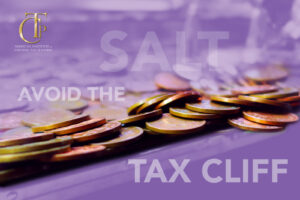For this final chapter in our “Ethical Issues” series, consider this question: How much are you charging for tax planning services—and do you think of this as an ethical question? The topic of pricing structures can feel deeply subjective. One tax professional may consider a certain price reasonable given their level of expertise, while another might say that price is outrageous. How do you know whose advice to take?
Tax practitioners are bound by the rules of Circular 230 when it comes to running their practice ethically. Though Circular 230 does not outline what you are specifically allowed to charge a client, these regulations do provide guidance on how to know if you’ve crossed an ethical boundary line. Here at the Institute, we often advocate for value pricing—or basing your fees on the value you provide to your clients rather than the number of hours spent on one engagement. When it comes to implementing value pricing, there are a few Circular 230 provisions you will want to keep in mind. Read on to learn more about these important rules.
Defining “Unconscionable” Fees
Unconscionability refers to an unjust practice. In contract law, one definition is “an absence of choice on one party with terms that are unreasonably favorable to the other party.” So unconscionability is not just about the fee itself but the freedom of choice that the taxpayer is given. If a client has entrusted a tax planner with their tax return and mere days away from the deadline the tax planner requests a fee that goes far beyond anything they had discussed previously, that would leave the taxpayer feeling trapped. Do they risk missing the filing deadline or pay the unexpectedly astronomical fee? This is a very different scenario than a client choosing upfront to pay a substantial fee because the tax planner has laid out a clear plan for saving the taxpayer four times that amount in taxes. The latter is what we aim for when we recommend value pricing.
As tax practitioners, what we are aiming for is synergy. We want to do such a clear and thorough job demonstrating the value of our services and our expertise that when it comes time to cite our fee, the client is on board given the tax savings we will be able to secure for them. As you explore value pricing, keep in mind that just because you are charging more than you ever have before does not necessarily mean the fee is unconscionable. If the value you are providing matches the cost, there is no reason you cannot be charging upwards of $10,000 for a return when the client stands to save much more than that amount.
Avoiding Contingent Fees
One thing that Circular 230 prohibits is charging contingent fees. Contingent fees can be structured in a number of different ways, but these are three types we want to avoid:
1. A fee that is based on a percentage of the refund received or taxes saved
2. A fee that is based (totally or partially) on whether a tax position avoids challenge or is sustained by the IRS or the court
3. A fee arrangement in which the tax practitioner reimburses some or all of the fee if the tax position is not sustained or if the IRS challenges that position
The first one is perhaps the most commonly confused with value pricing, but there is a distinct difference. With value pricing, we are telling the client that we can provide a quantified and estimated value and stating a specific price to get that value. A contingent fee differs in that the actual price is muddy. For example, if you say “whatever you save on taxes, I will charge you 23% of that total,” this is results-based, not value-based. That approach is prohibited by Circular 230. However, basing an upfront fee on the estimated value you can provide a client is perfectly allowable.
The second and third types are similar—we cannot base our fee on the result of a tax filing. This means we cannot say that if our recommended tax strategy works, we’ll charge the client “X” dollars. We also cannot say that we will reimburse the taxpayer a certain amount if they do not see the savings expected. This is why at AICTP we coach our tax planners on how to structure the discovery session and pricing discussion with the client. You want to ensure that the conversation provides extreme clarity on the value behind the pricing and avoids any taint of there being a contingent fee.
Now, not all types of contingent fees are prohibited by Circular 230. Theoretically, you are allowed to use this pricing structure:
• when the IRS initiates an exam or challenge to an original or amended tax return
• if the taxpayer wants to make a claim for a refund or abatement of penalties or interest
• if a case goes to tax court or other judicial proceeding
Since these cases go beyond the bounds of the typical tax filing process, tax practitioners are allowed to quote a fee that is attached to the results of this new situation—whether that’s upholding a claim made on the tax return or supporting the taxpayer in court.
The last point to consider is even if you are legally permitted to charge a contingent fee, does that mean you should? If you focus only on whether your circumstances fit one of the three exceptions above, you may never pause to consider if this would be the best business practice. A contingent fee means you don’t get paid up front. You are shifting to a reactive work style instead of a proactive work style where we show the value, we get paid, and we do the work on our own terms. The latter is much more sustainable for your tax practice and lends itself to higher quality work.
Summary
Value pricing is a proactive approach that can free up the tax practitioner to focus on the quality of each tax return rather than attempting to clock as many hours as possible to generate the needed income. However, tax planners who are new to value pricing need to be conscious of the boundaries set by Circular 230. Value pricing is not the same as charging contingent fees, which fail to define a specific price for the client until after the result of a tax return has been received. Value pricing should also never veer into the territory of unconscionable fees. As long as the actual value you are providing clients matches your fees and the client has the time and freedom to say no to your proposal, this should be an easy problem to avoid.
To ensure you are up-to-date on the ethical implications of setting prices in your tax practice, continue your learning journey by becoming a Certified Tax Planner today.





